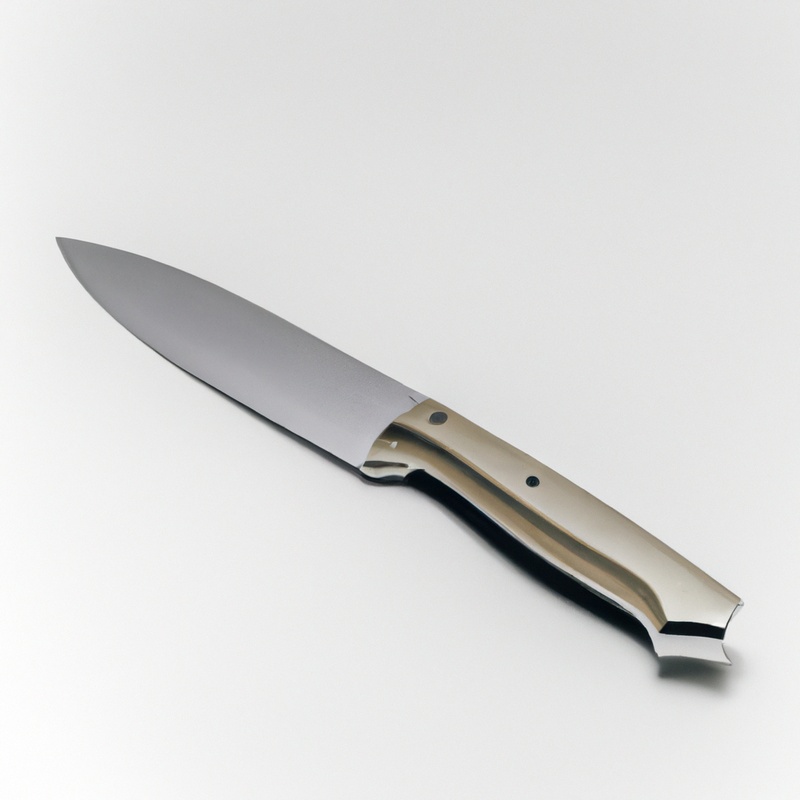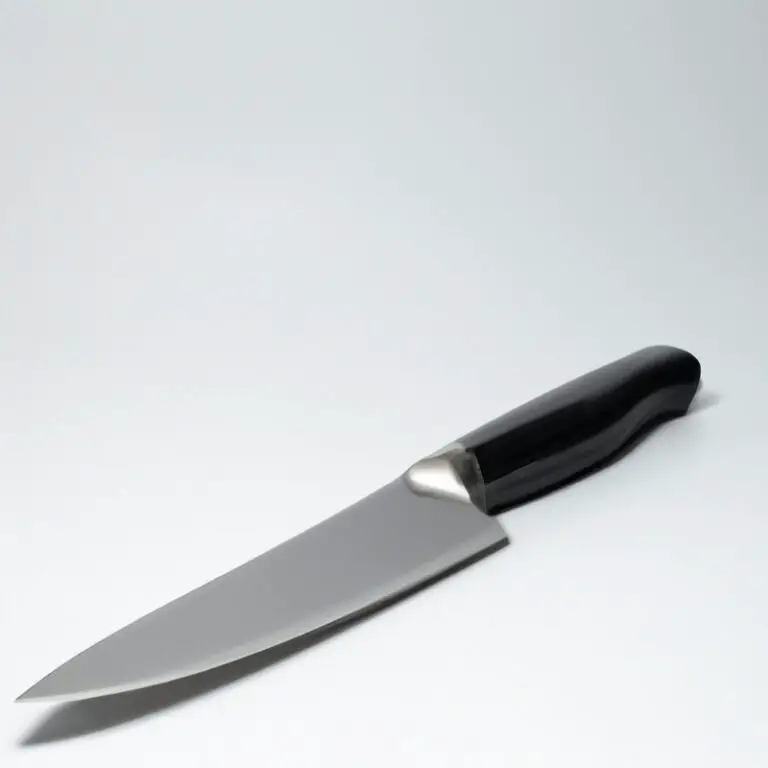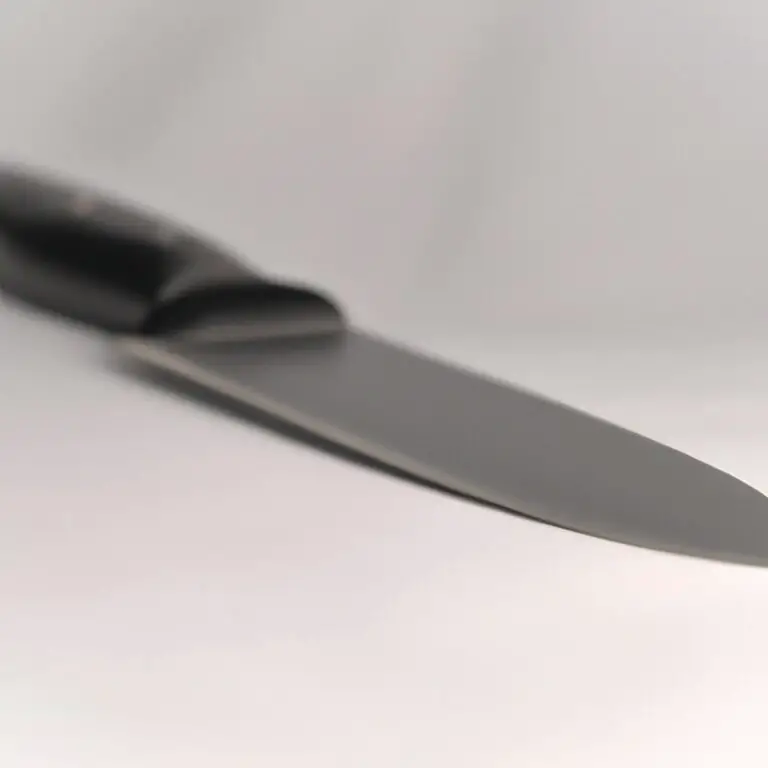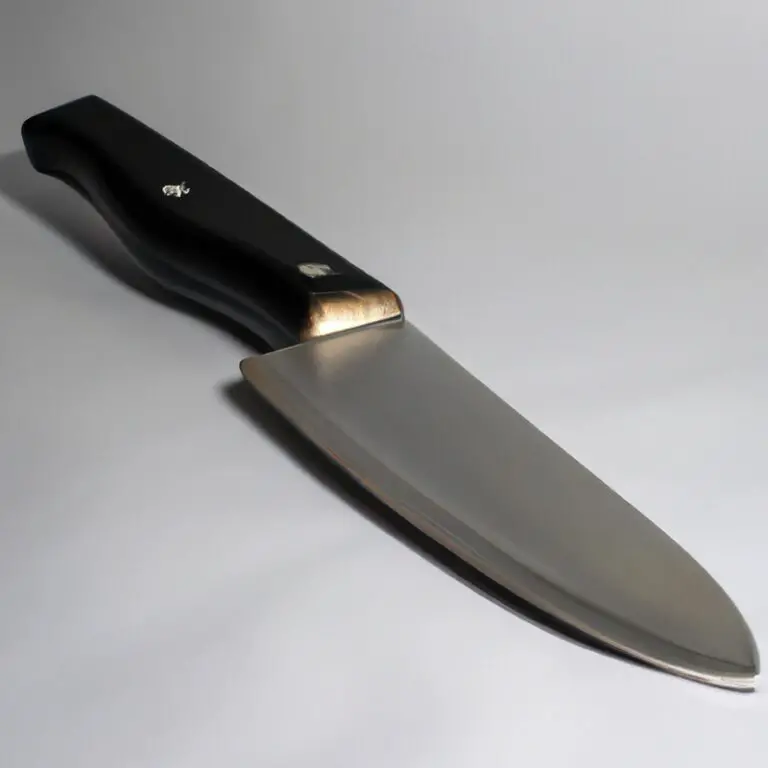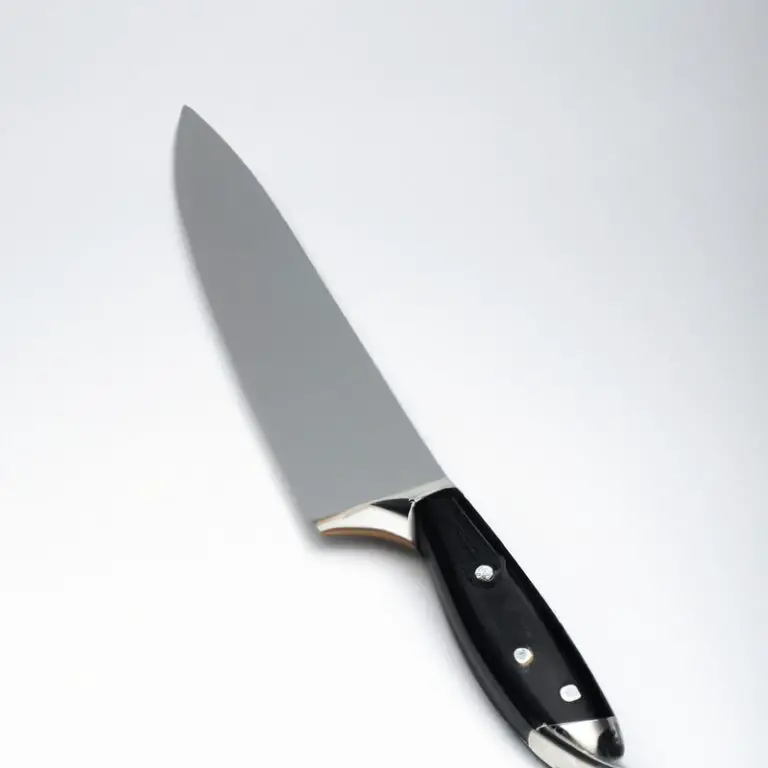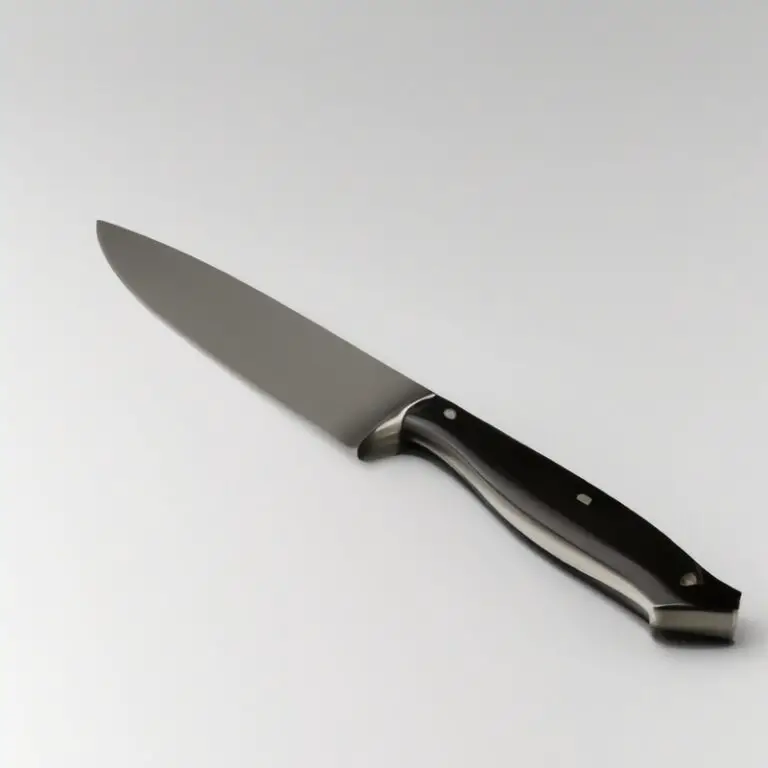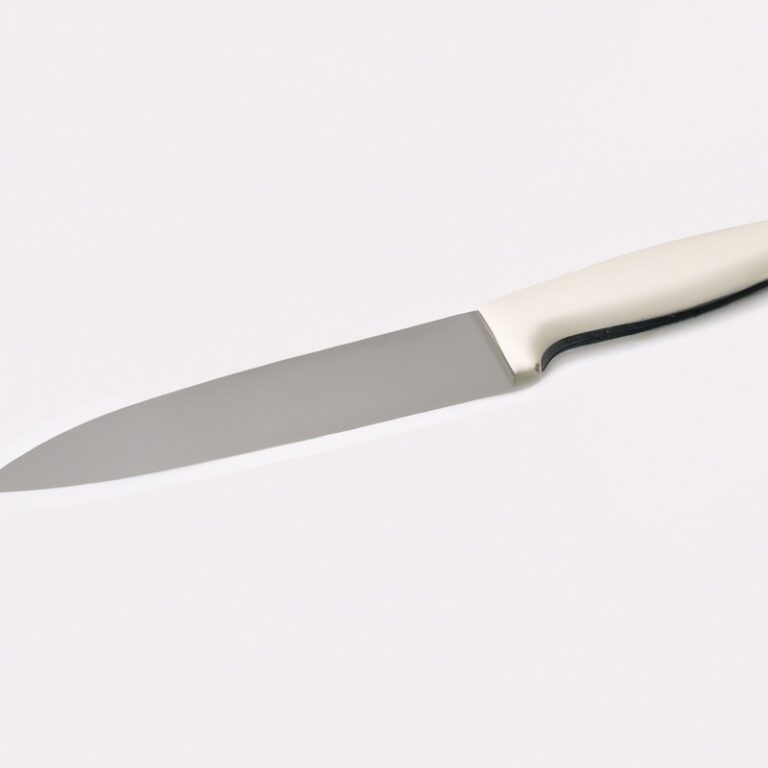How To Protect The Edge Of a Chef Knife During Transportation? Easy Solution
Key Takeaways:
- Use a sheath or blade guard to protect the edge of your chef knife during transportation to prevent damage or injury.
- Ensure that the sheath or blade guard fits your knife properly to provide maximum protection and avoid any slippage or movement.
- Use caution when handling your knife during transportation and avoid placing it near other sharp objects or in areas where it may fall or be bumped.
- Regularly inspect your knife and its protective covering for any signs of wear or damage, and replace as needed to maintain optimal protection and safety while on the go.
As a chef, your knife is your most valuable tool, and keeping it sharp is crucial for delivering perfect cuts every time. However, when you need to transport your knife from one location to another, its edge can be easily damaged if not protected properly.
In this article, I’ll share some effective tips and tricks for protecting the edge of your chef knife during transportation.
From choosing the right knife sheath to using blade guards and investing in a knife roll or case, I’ll cover everything you need to know to ensure your knife arrives at your destination ready for action.
| Options | Pros | Cons |
|---|---|---|
| Knife sheath | Provides full protection for the blade and edge | Can be bulky and may not fit all knife sizes; may damage the blade if not placed properly |
| Blade guard | Lightweight and easy to use; fits most knife sizes | May not provide full coverage and protection for the edge; may scratch the blade |
| Cloth wrap | Flexible and can fit various knife sizes; can be secured with a rubber band or tie | Does not provide ample protection for the edge; may move around during transportation |
Understanding the importance of protecting the edge of a chef knife
Properly protecting the edge of a chef knife during transportation is essential to maintaining its sharpness and prolonging its lifespan. The edge of a knife is its most important feature, and any damage incurred during transportation can result in expensive repairs or even the need for a replacement.
It’s important to take the necessary precautions to protect the blade, whether it’s through investing in a protective sheath or properly wrapping it for transport.
Neglecting to protect the edge can result in a dull, unusable knife, which can negatively impact the quality of the food being prepared.
Choosing the right knife sheath for safe transportation
Choosing the right knife sheath for safe transportation is crucial to keep your chef knife protected from damage and yourself from injury. A knife sheath should fit your knife snugly, preventing accidental slips and bumps during transportation.
It should also be made of durable materials that can withstand wear and tear, such as leather or hard plastic.
It’s best to avoid fabric sheaths as they can easily tear and don’t offer enough protection. Additionally, consider the sheath’s closure mechanism.
A sheath with a secure snap or buckle will keep your knife safely in place whereas a simple flap could open up during transit.
When choosing a sheath, make sure it’s specifically designed for your knife’s size and shape. A well-fitted sheath provides a layer of protection for your chef knife during transport, ensuring it arrives at its destination in top condition.
How to properly wrap a chef knife for transportation
Properly wrapping your chef knife before transportation is crucial to protect its edge and prevent any damage. Here are some steps to follow:
- Clean the knife blade and dry it thoroughly before wrapping.
- Use a soft cloth or paper towel to wrap the blade. Ensure that the blade is completely covered and no parts are left exposed.
- Use tape or a rubber band to secure the wrapping on both ends.
- Place the wrapped knife in a sheath or blade guard.
- Place the knife in a knife roll or case if you have one.
- Keep the knife securely in your bag or backpack, away from other items that might damage the blade.
Properly wrapping your chef knife is a simple yet effective way to prevent accidents and ensure your knife stays sharp and intact during transportation.
Using blade guards to protect the edge during transit
Using blade guards is an effective way to protect the edge of a chef knife during transit. These guards provide a sturdy sheath that covers the blade, preventing it from coming into contact with other objects that may cause damage.
Blade guards come in various shapes and sizes, making it easy to find one that fits your knife correctly.
They are made from materials such as plastic, leather, or canvas, and can be purchased separately or as part of a knife set. Ensure that the blade is clean and dry before inserting it into the blade guard.
This will help prevent rust and corrosion from forming on the blade.
Use blade guards whenever you need to transport your chef knife. They are an affordable and easy way to protect your investment and prevent damage to the blade during transit.
The benefits of investing in a knife roll or case
Investing in a knife roll or case can offer various benefits. They provide a safe and secure way to transport and store knives during travel.
An excellent quality knife roll offers individual pockets to keep each knife separate and protect them from getting damaged.
It also helps in keeping the blade sharp by avoiding contact with other metal utensils or the interior of the carrying case. Additionally, a knife roll or case is an efficient storage solution that can keep your knives organized, easy to access, and visually appealing.
Economically, it is a smart investment as it helps prolong the life of your expensive knives and saves you the expense of buying new ones.
As a chef, investing in a high-quality knife roll or case is a must-have, and it gives you peace of mind knowing that your knives are safe and secure.
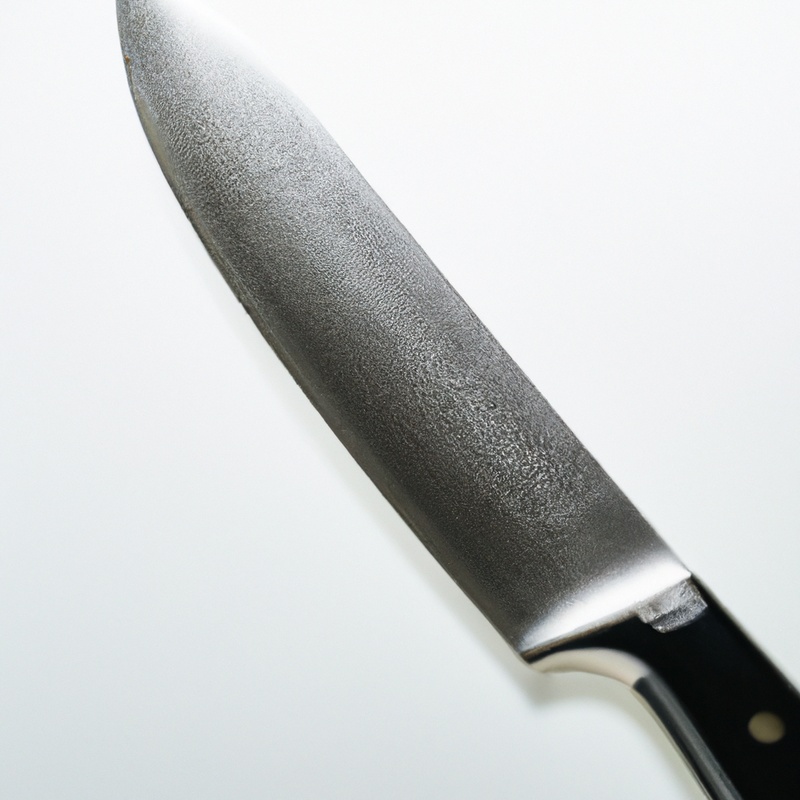
Tips for storing and securing your knife during travel
When transporting a chef knife, it’s crucial to ensure it’s stored securely to prevent damage and maintain its sharp edge. Here are some tips to keep in mind:
- Always use a knife sheath or blade guard: A sheath or guard helps protect the blade from scratches and nicks during transit.
- Wrap the knife properly: If a sheath is unavailable, wrap the blade in a soft cloth or paper towel, securing it with tape or a rubber band.
- Use a knife roll or case: These cases have designated compartments to securely hold knives during travel.
- Keep the knife separate from other items: Store the knife away from other items in your luggage to minimize the risk of damage.
- Pack the knife in your carry-on: Transporting the knife in your carry-on luggage allows you to closely monitor it during the journey.
By following these tips, you can ensure your chef knife remains secure and sharp during travel.
Best practices for handling and carrying your chef knife while traveling
When it comes to handling and carrying your chef knife while traveling, it’s important to take extra precautions to avoid accidents. Here are some best practices to keep in mind:
- Always keep the knife in a sheath or blade guard to prevent accidental cuts.
- Wrap the knife in a protective material such as bubble wrap or a kitchen towel to avoid scratches and damage.
- Use a dedicated knife roll or case with slots for individual knives to keep them organized and secure during transit.
- Always handle the knife with care and avoid swinging it around or letting it come into contact with hard surfaces or other objects.
- Keep the knife in a secure location during transportation, such as in a separate bag or compartment, and avoid leaving it loose or unattended.
By following these best practices, you can ensure that your chef knife stays safe and protected during travel, and is ready to use when you arrive at your destination.
How to properly clean and maintain your chef knife after transportation
After transporting your chef knife, it is essential to clean and maintain it properly to keep it in top condition. Here are the steps to follow:
- Rinse the blade with warm water and mild dish soap. Avoid using harsh cleaners that could damage the blade.
- Dry the knife thoroughly with a soft cloth to prevent water spots or rust.
- Use a sharpening stone or honing rod to sharpen the blade if necessary.
- Apply a food-safe lubricant or oil to the blade to protect and maintain its edge.
- Store the knife in a safe place, such as a proper knife block or sheath, to prevent damage or accidents.
By following these steps, you can ensure that your chef knife remains in excellent condition and ready to use for your next culinary adventure.
Common mistakes to avoid when transporting a chef knife
Common mistakes to avoid when transporting a chef knife:
- Incorrect packaging: One of the most common mistakes is packaging the chef knife in inappropriate materials. Avoid using tape or newspaper as they may leave residue or damage the edge of the blade.
- Overexposure: Keeping the knife exposed for prolonged periods is a mistake that should be avoided. Carry the blade in a sheath or wrap it with a protective material.
- Careless handling: Carrying the knife in a loose bag or suitcase may result in the blade moving around and causing harm to the user or the knife itself. Always secure the blade in a knife roll or a dedicated case.
- Not checking regulations: Certain countries have specific regulations for carrying and transporting sharp objects. It’s essential to check the laws of the destination before traveling with a chef knife.
- Not cleaning and oiling the blade: Neglecting to clean and oil the blade after use can lead to corrosion and rust, which will reduce the lifespan of the knife.
By avoiding these common mistakes, chefs can safely transport their knives and maintain the sharpness of the blade.
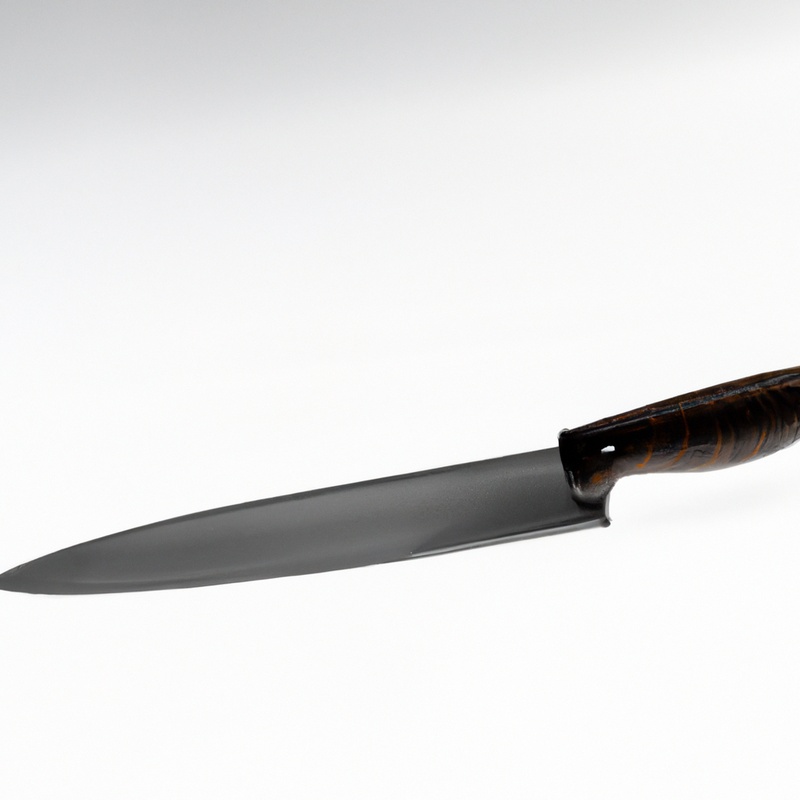
Essential knife safety practices to keep in mind when traveling with a chef knife
When traveling with a chef knife, it is essential to keep it safe and maintain its sharp edge. Here are some safety practices to keep in mind:
- Avoid carrying the knife in your hand or loose in your bag. Always store it in a secure sheath or blade guard to prevent accidental cuts or damage to the blade.
- When wrapping the knife for transportation, make sure that the blade is covered completely, and the wrapping material is strong enough to prevent the blade from piercing through it.
- If you are investing in a knife roll or case, choose one that has individual slots or pockets to prevent the knives from rubbing against each other and causing damage.
- When storing the knife during travel, ensure that it is kept away from moisture and heat. Avoid leaving it in direct sunlight, as this can cause the blade to warp.
- While carrying the knife, hold it by the handle, with the blade pointing downwards and away from your body.
- After reaching your destination, clean the knife with soap and water, then dry it thoroughly before storing it.
By following these essential safety practices, you can protect your chef knife during transportation and ensure that it remains sharp and safe to use.
Final Verdict
Protecting the sharp edge of your chef knife during transportation is essential for maintaining its quality and functionality. By choosing the right knife sheath, using blade guards, investing in a knife roll or case, and following proper storage and cleaning techniques, you can ensure your knife stays safe and secure while on the go.
Remember, handling a chef knife requires discipline and attention, and incorporating essential knife safety practices is crucial to avoid accidents and injury.
By following these expert tips, you can protect your investment and ensure your chef knife continues to be your trusted and reliable kitchen companion. Don’t let poor transportation ruin your culinary creations, take the necessary precautions, and keep your chef knife sharp, safe, and in top condition.

